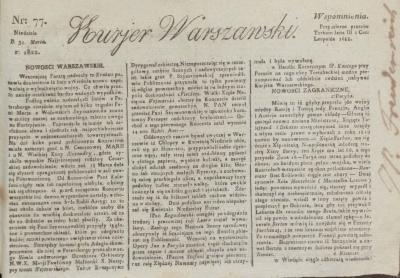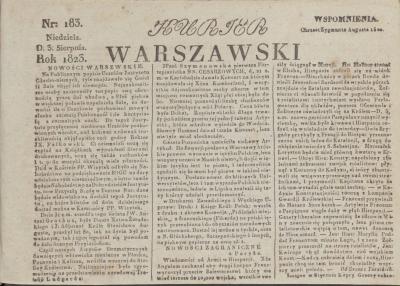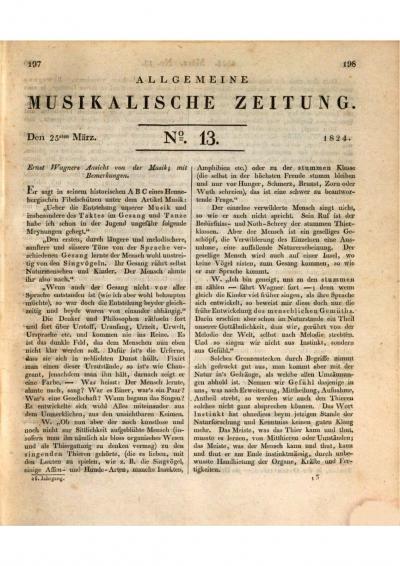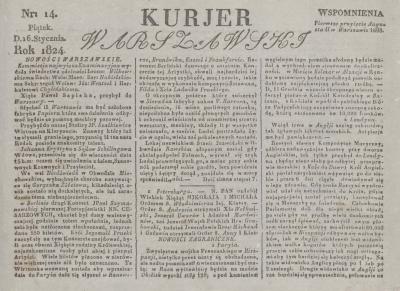Madame Szymanowska and Goethe – a burning love?

The public concert inspired by Goethe was able to take place on 4 November “in the chamber of the town hall before what was, by local standards, a very large audience, after Grand Duchess Maria Pawlowna, the daughter-in-law of Grand Duke Carl August, had loaned out her own instrument“.[57] The Journal für Literature, Kunst, Luxus und Mode (PDF 5) reported extensively on the concert in which vocal soloists and members of the court orchestra also performed. Beethoven’s Fourth Symphony in B major, the Piano Concerto in A minor by Hummel, a piano quintet by Beethoven, vocal pieces by Ferdinando Paër, a piano nocturne by John Field and a rondo from the First Piano Concerto by Klengel: “the outstanding artist was rewarded with general, rapturous applause. She performed Hummel’s difficult concerto with a strength and softness, skill, precision and rounding which astonished everyone, and which without doubt even the master, who, removed from every ignoble consideration, has been a true friend of the artist since his sojourns in Petersburg, if he had been present would certainly have appreciated it in full fairness.”[58] The Allgemeine musikalische Zeitung pronounced its judgement: “Here, as elsewhere, Mad. Szymanowska found enthusiastic admirers, who in all respects rated her playing far above the playing of many famous artists and seemingly found in it the pinnacle of what it is possible for human strength to achieve.”[59]
Chancellor von Müller reported on a subsequent dinner at Goethe’s, at which he delivered a rapturous laudation to Szymanowska: “Do we not all feel refreshed, improved, expanded in the core of our being by this gracious, noble apparition which now intends to leave us again? No, she cannot disappear, she has transitioned into our inner being, she continues to live in us with us and even if she starts, as she intends to, to escape me, I will always hold her tight within me.”[60] It is possible that the fourteen-year-old Felix Mendelssohn-Bartholdy was at the concert because during this time he was a guest at Goethe’s and at the Weimarer Hof yet again as a kind of child prodigy. This comes from the music commentator and Mendelssohn biographer August Reissmann ascribing a quote to the “boy wonder” in which he cheekily commented on Goethe’s oft repeated comparison between Hummel, who briefly was Mendelssohn’s teacher, and the “piano virtuoso Szymanowska, who was staying in Weimar during that time: “Szymanowska is placed above Hummel. They have confused her pretty face with her playing.”[61]
[57] Madam Szymanowska – zu Weimar. Journal für Literatur, Kunst, Luxus und Mode, N0. 109, November 1823), page 890 (see PDF 5), online resource: https://zs.thulb.uni-jena.de/rsc/viewer/jportal_derivate_00217576/JLM_1…
[58] Ibid
[59] News. Weimar. April to the end of 1823, in: Allgemeine musikalische Zeitung, No. 9, Leipzig, 26 February 1824, column 139, online resource: https://www.digitale-sammlungen.de/de/view/bsb10527974?page=88,89
[60] Tuesday, 4 November. Goethes Unterhaltungen (see Note 38), page 72, online resource: https://www.digitale-sammlungen.de/de/view/bsb11001483?page=88,89
[61] August Reissmann: Felix Mendelssohn-Bartholdy. Sein Leben und seine Werke, third edition, Leipzig 1893, page 29 f. – The quote was presumably first found in the book by the historian and son of Mendelssohn, Carl/Karl Mendelssohn Bartholdy: Goethe und Felix Mendelssohn Bartholdy, Leipzig 1871, page 17, online resource: https://www.digitale-sammlungen.de/de/view/bsb11001481?page=26,27&q=Szymanowska – More critiques of Szymanowska’s concert in Weimar from newspapers and magazines as well as statements from contemporaries can be found in Bischler 2017 (see Literature), page 75-86
















